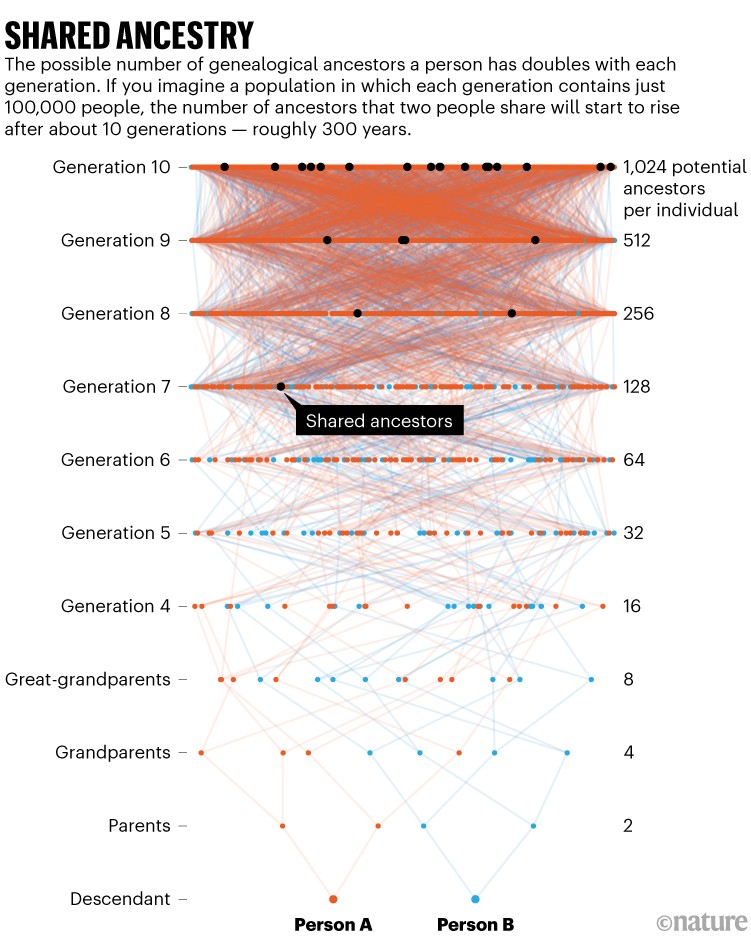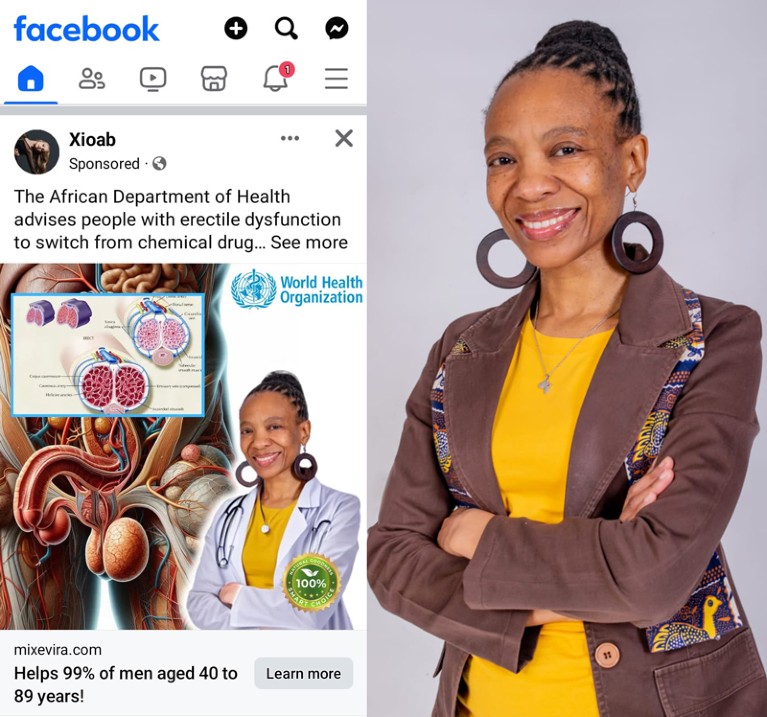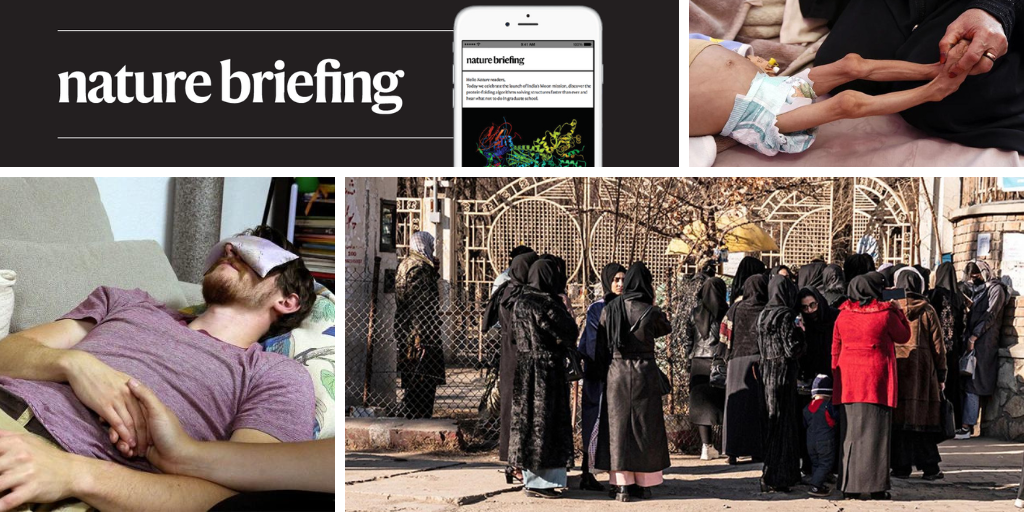Hello Nature readers, would you like to get this Briefing in your inbox free every day? Sign up here.

Female students gather outside a university in Kabul at the end of 2022. They have been banned from studying since 2021.Credit: Wakil Kohsar/AFP/Getty
Three years after the Taliban seized power in Afghanistan, some five million people have left the country, including many of the country’s scientists. Nature spoke to a handful of these refugee researchers and found that while most consider themselves lucky, they are anything but settled. “The Taliban said that girls should not go to the research centre,” recalls clinical scientist Shekiba Madadi, who left Afghanistan to move to the United States in 2023. “I got very depressed.” Even for those who escape, life remains precarious: they worry about the families they left behind, and about their visas expiring. An Afghan passport, says one, is like being in prison. “You cannot go anywhere.”
In a setback for psychedelic therapy, the US Food and Drug Administration (FDA) declined to approve MDMA, also known as ecstasy, as a treatment for post-traumatic stress disorder. The FDA requested an additional trial, which Lykos Therapeutics, the company that tested the drug, says will take several years to conduct. The FDA hasn’t publicly explained its decision. But Lykos has faced questions about its trials’ design and accusations that it had pressured trial participants to report positive results. After the FDA released its decision, the journal Psychopharmacology retracted three of Lykos’s papers based on ethical concerns.
A study of more than ten million people suggests that early pregnancy is the most vulnerable time to be exposed to malnutrition, doubling the risk of diabetes decades later. The study looked at survivors of the Holodomor famine in Ukraine from 1932 to 1933, which resulted in roughly four million deaths from malnutrition. Researchers found that people born in early 1934 — who would have been conceived during the peak of the famine — had a much higher risk of developing type 2 diabetes as adults. Among individuals who were conceived in regions that experienced extreme famine, the risk of developing diabetes more than doubled, compared to those born in regions with no famine.
Infographic of the week

Source: Graham Coop/gcbias (https://go.nature.com/3AAG9SV)
After 10 generations — roughly 300 years — the number of ancestors that two people share will start to converge. Ancient DNA techniques are allowing scientists to connect modern people to their ancestors who lived hundreds or thousands of years ago. The findings could answer historical questions but also raise ethical dilemmas. (Nature | 15 min read)
Features & opinion
Bad actors are snatching videos of researchers and creating deepfakes that hawk fake drugs using their likenesses. These AI-created videos are becoming easier to make and pose significant reputational risks to scientists, not to mention the potential harm to impressionable viewers. “To spread misinformation, you want to manipulate what people think are the trusted sources,” says educational policy expert Christopher Doss. Scientists affected should contact the platform hosting the deepfake and tell their employers and professional societies. They can also consider legal action or police involvement, although prosecuting perpetrators has proved challenging.

Urologist Kgomotso Mathabe was a target of a deepfake video and other faked advertisements, such as this one (left) for an erectile dysfunction treatment, which took an original photo of her (right) and edited it to make it look like she was wearing a white coat and stethoscope.Credit: Courtesy of Kgomotso Mathabe
How do frontline climate researchers manage feelings of stress and anxiety in the face of climate disaster? Erika Berenguer studies the effects of fire in the Amazon and finds it difficult to cope with the mental and physical stress. “The first time I felt deep sadness was in 2015, when about one million hectares of forest got wiped out by fire.” Once back home, a colleague told her that she was experiencing grief. Some organizations offer climate professionals group discussions to help them process their emotions, others use their collective eco-anxiety as a motivator for activism.
Mathematicians have created a new family of shapes, similar to a multidimensional guitar pick, that roll like a wheel in higher dimensions. Wheels and spheres roll smoothly without wobbling because they are objects with constant width. In two and three dimensions, mathematicians have previously created smaller rolling objects called Reuleaux triangles and Meissner bodies — both similar in shape to guitar picks — that have constant width but less volume than wheels and spheres. Now a concise three-page proof offers a solution for higher dimensions. “It’s a stunning theory,” says mathematician Gil Kalai.
Scientific American | 6 min read
Reference: arXiv preprint
Today I am feeling moved by a report from the 2024 AIDS Conference in Munich in July. The attendees were already familiar with blockbuster news that, in a trial in women in Africa, twice-yearly injections of lenacapavir provided 100% protection against HIV. “How could we help ourselves?” asked infectious-disease researcher Paul Sax. “Several attendees today reported to me they had tears of joy.”
This newsletter is always evolving — tell us what you think! Please send your feedback to [email protected].
Thanks for reading,
Flora Graham, senior editor, Nature Briefing
With contributions by Sarah Tomlin and Josh Axelrod
Want more? Sign up to our other free Nature Briefing newsletters:
• Nature Briefing: Microbiology — the most abundant living entities on our planet — microorganisms — and the role they play in health, the environment and food systems.
• Nature Briefing: Anthropocene — climate change, biodiversity, sustainability and geoengineering
• Nature Briefing: AI & Robotics — 100% written by humans, of course
• Nature Briefing: Cancer — a weekly newsletter written with cancer researchers in mind
• Nature Briefing: Translational Research — covers biotechnology, drug discovery and pharma


